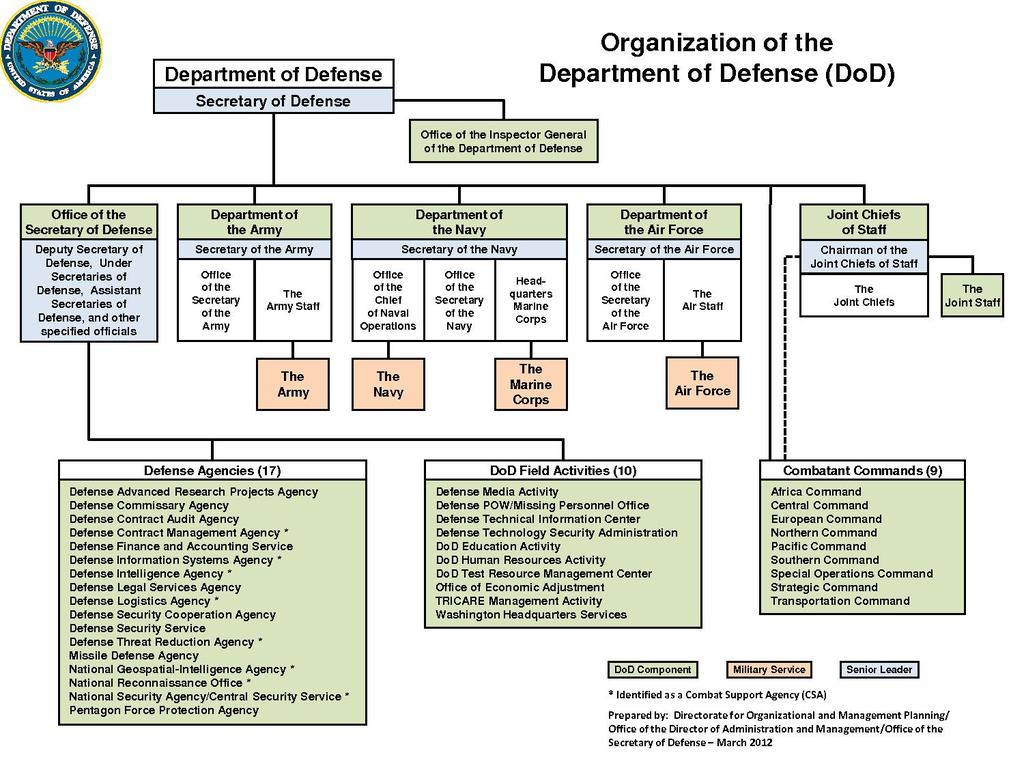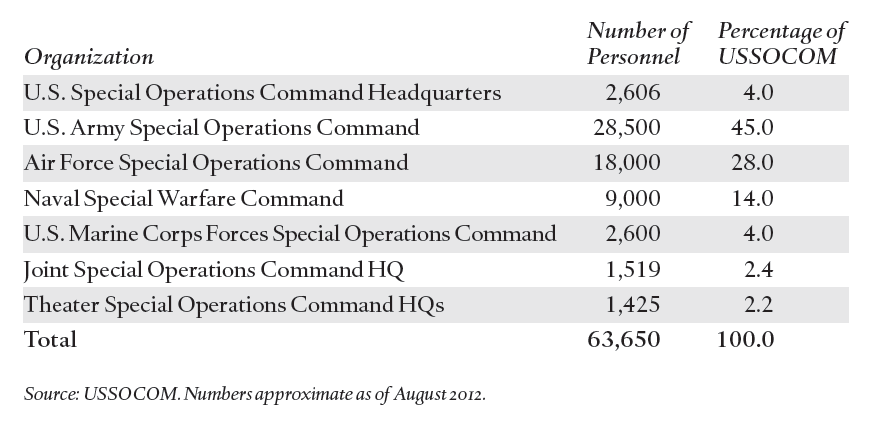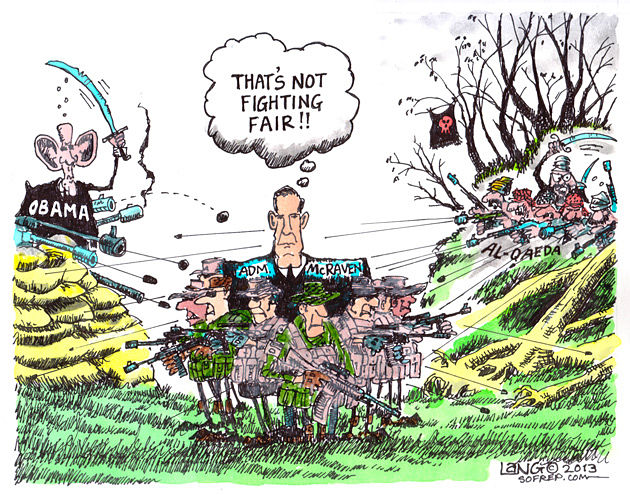“Innovation has nothing to do with how many R & D dollars you have. When Apple came up with the Mac, IBM was spending at least 100 times more on R & D. It’s not about money. It’s about the people you have, how you’re led, and how much you get it.” -Steve Jobs
It’s clear to me that very few people in academia and the main stream media understand the current issues facing the Special Operations community. The recent Council on Foreign Relations report on the future of SOF written by civilian Linda Robinson is a good document, but is missing some key elements, for example, how back-to-back combat deployments are affecting morale, family life, and readiness of force. The report includes some very valid data and conclusions however, you can’t expect someone to complete the full puzzle if they don’t have the required experiential background to know what the overall picture looks like.
I do share the report’s observation that the demand put on US SOF since 2001 has outpaced the strategic vision, and this is no doubt a major issue in itself.
US Special Operations Command (US SOCOM) has become very large, and when large organizations experience fast growth they are at risk of becoming marginalized by smaller and more innovative competition. In SOCOM’s case, their competition is violent extremists who promote terror and a radical religious ideology that does not tolerate freedom of choice.
The terrorists only rules? That there are no rules, and this gives them a major advantage.
A Look at US SOCOM
US Special Operations Command has become a massive organization, 60,000+ strong, with a budget that has grown from $2.3B to $10.4 since 2001. There’s an inherent inflexibility and bureaucracy that comes with an organization of this size. The question that begs to be asked is, “Are we moving towards conventionalizing SOF Forces?” I believe that this is the elephant in the room nobody is talking about.
US SOCOM was established in 1987 out of a necessity (e.g. failed Iran hostage rescue) to create a central node of communication and cooperation among the different SOF service branches of armed forces. It didn’t come without regular military pushback, which was understandable. Up to this point, Special Operations had largely served as the bastard child of the military, but all this was about to change, especially after 9-11-01. SOCOM initially included the Army, Navy, and Air Force – USMC initially declined but later realized the error in that decision (read more here), and now have a seat at the table.


.

Already have an account? Sign In
Two ways to continue to read this article.
Subscribe
$1.99
every 4 weeks
- Unlimited access to all articles
- Support independent journalism
- Ad-free reading experience
Subscribe Now
Recurring Monthly. Cancel Anytime.
As I’ve stated previously, there’s going to be growing pains and inconvenient inherent traits that come with being so big. The biggest setbacks to most large organizations (see The Innovator’s Dilemma) are lack of innovation and losing the ability to act quickly in the market place, and SOCOM has a global market to think about. These are the biggest challenges I see facing US SOCOM in its current form.
McRaven has done a great job managing DC politics, but has the Admiral set up the necessary framework, and culture within SOCOM to ensure that innovation and the ability to act fast are not being marginalized? Are core SOF values around, unconventional thinking, and innovation instilled in the soul of SOCOM? Everything I’ve seen so far does not indicate that this is the case. I’ll only point to the current Rules of Engagement in Afghanistan to make my point. Conventional rules puts SOF in a very vulnerable position when fighting an enemy with no borders or play book. I can’t help but think that it’s very similar to how the American revolutionaries defeated a much larger British force who expected “civilized” warfare, and got unconventional instead.
On the larger scale, we’ve become good at winning battles but terrible at winning wars in the 21st Century. One of the reasons for this, and what SOFREP contributor Peter Nealen has pointed out, is that we’ve adopted the philosophy of “Limited War,” and its a fools strategy at best.
Issues facing SOCOM
A. Becoming conventional by size, structure, and nature.
The main advantage of the SOF unit of the past was that it could act with autonomy. This methodology has been slowly eroded since 2001, and replaced with a large command structure and slow-moving decision tree. Hell, a few of my friends had JAG lawyers waiting to interrogate them after actions on the objective.
“Risk aversion was the greatest trend I saw. SOF, especially Army SF, were originally started to be able to be small, fluid, flexible, and able to make serious international diplomatic decisions on their feet. I had one instance in Iraq where a CONOP for a counter-mortar LP/OP was disapproved because we “didn’t have enough team leadership on the operation,” even though it was two E-6s with four Iraqi Scouts.
The risk averse leadership is promoted from within because their OER looks better, and the free-thinking, daring officers and NCOs tend to leave the force for the civilian world… sometimes for no other reason than getting away from the insanity.” -Former Army Special Forces/Green Beret Blake Miles
B. Psychological issues that come with sustained combat operations and promoting a culture of “anything goes” at certain Tier 1 SOF units.
Broken families, PTSD, domestic violence, NDA violations, and illicit drug addiction, to name a few. These are major issues, and something nobody wants to talk about outside of closed doors. SOFREP isn’t naming names but we’re calling it like we see it, and left unchecked by current leadership, this current culture will not end well when these violations come to light in the main stream press. It’s a bad case of exemplary leadership that many should be ashamed of. To the men I know who’ve stood up and said something, and been punished for it, at least you can sleep with yourself at night knowing you were on the right side of things.
C. Lack of clear overarching strategic objective for the organization as a whole.
What is SOCOM’s Mission statement in two sentences? Most people I know in SOF cannot recite it. If it’s not clear from the bottom up, then it’s a problem. In football terms, you have players on the field who don’t know what it takes to win, or what direction to run in order to score a touchdown. This was also addressed in the current Council of Foreign Relations report on the future of SOF.
D. Tier One unit infrastructure and cultural issues.
CAG (Delta) vs. DEVGRU (ST-6). Delta is composed primarily of active duty support personnel, making it move faster but with some continuity issues. In comparison, DEV is mostly comprised of GS (General Schedule contractor) support, slower moving but this maintains continuity. Most I’ve talked to prefer an active duty organization that rotates ideas, energy, and morale over a long-term GS organization. Culturally, Delta has always been more of “the quiet professionals” when compared to my own community and that of SEAL Team 6. SEAL Team 6 has done a better job at the politics of war, and has traditionally been given more high-profile missions because of it. CAG could take a lesson in politics from the Navy, and on the flip side, NSWDG could do a better job being the “quiet professionals.” Many in my community will disagree with this, but I only have to point to the book No Easy Day, active DEV guys consulting for the video game Medal of Honor (TTPs?), and the recent Esquire article featuring one of the UBL team members to make this point.
“..you need a massive intelligence and logistics infrastructure to accomplish complicated and technical Special Operations missions, but it also leads to a bloated bureaucracy filled with staff officers who have no real job other than to interject white noise into the decision making process. However, I see the real problem in SOCOM being careerism and CYA risk aversion before the real obstacle and not a simple matter of the numbers involved. SOCOM is still way too top-heavy with officers, though. It is so bad that it is to the point that entire new bureaucracies were created overseas just so that officers could have jobs. One is the CJSOTF which is not a doctrinal part of Special Forces operations. ODAs do JCETs all over the world without a CJSOTF and seem to do just fine. The CJSOTF may be required for some logistical resupply operations and unit deconfliction, but it has grown into a monster over time which has created this inverse relationship in which Officers now see the CJSOTF as the maneuver element, and ODAs as the supporting mechanism for this bureaucracy.” -Former Special Forces/75th Ranger Jack Murphy
What Next
McRaven should look to ensure that US SOCOM gets off the path to conventionalization that is all about conventional rules, shiny boots, starched uniforms, online sensitivity training, and loss of cultural innovation. It’s ok to break the right rules every now and then but the wrong rules are being broken (failed drug tests, broken NDAs, and violent crime etc.). Unconventional warfare needs to remain the heart and soul of US Special Operations Command, and component commands. Small unit autonomy, breaking the right rules, cultural influence, and relationship building has always been the heart Special Operations. Something must be done to ensure these are not lost to the big machine of SOCOM.
A clear mission plan written by operators (not consultants) needs to be implemented to get everyone on the same map. If we are going to engage in warfare in the modern century, then we should do it with clear, achievable, and measurable strategic goals that everyone can understand. We don’t have this now in Washington or Afghanistan; we have Warfighters busying themselves in a game of war with rules and objectives that are unclear. They are lions led by the lambs of political elites in Washington.
Lastly, we must include an important component that is missing in today’s modern Special Operations warfare: the strategy of prevention. We can’t kill our way to peace. How do we address, and reduce, not increase, the evil and hate in the world. Right now we are minting radical extremists and feeding the hate machine at a record pace.
One thing is clear: Special Operations and unconventional warfare is the way future wars will be fought on any scale. I only hope that the core values of SOF are not lost, and that US SOCOM takes a hard look in the mirror at what it’s become, and to steal a quote from Churchill, “However beautiful the strategy, you should occasionally look at the results.” Both at home, and abroad.

